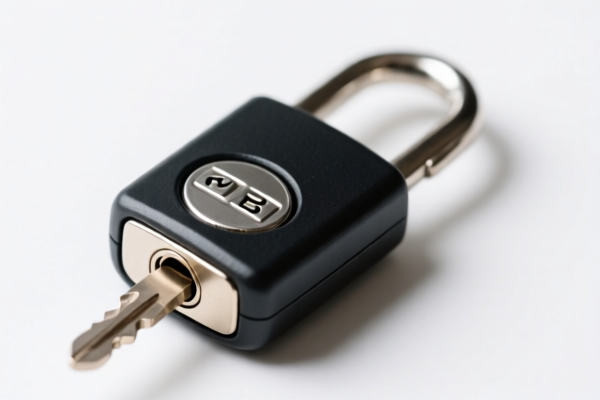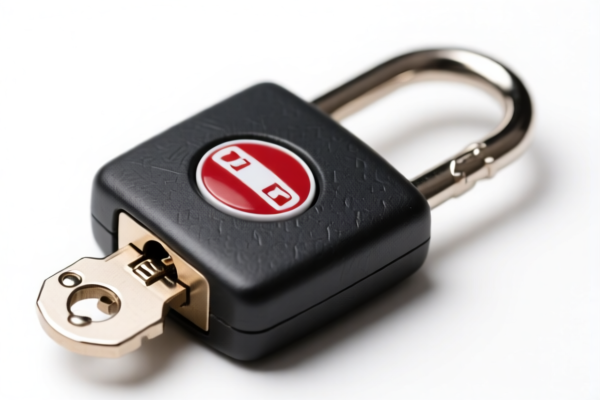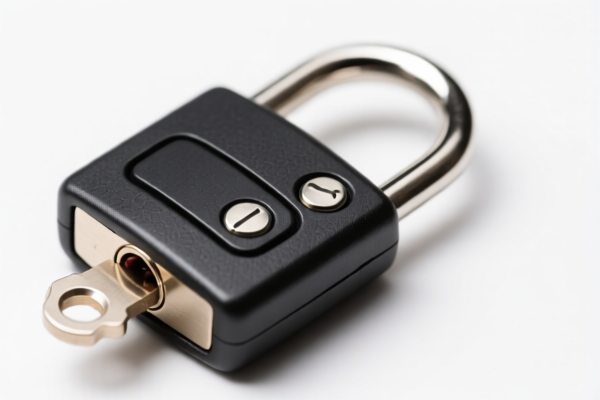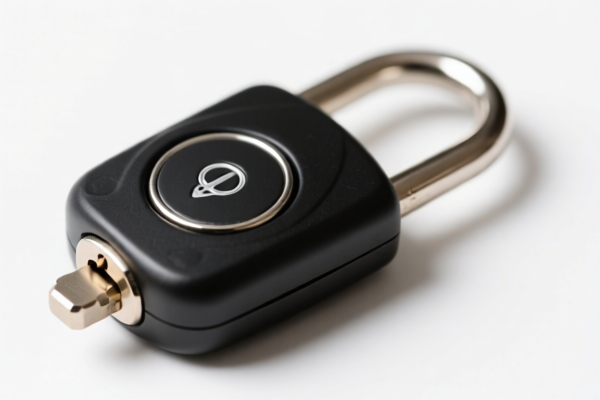| HS Code | Official Doc | Tariff Rate | Origin | Destination | Effective Date |
|---|---|---|---|---|---|
| 8301200030 | Doc | 60.7% | CN | US | 2025-05-12 |
| 8301200060 | Doc | 60.7% | CN | US | 2025-05-12 |
| 8302303010 | Doc | 82.0% | CN | US | 2025-05-12 |
| 8302416080 | Doc | 83.9% | CN | US | 2025-05-12 |
| 7308907000 | Doc | 80.0% | CN | US | 2025-05-12 |
| 7308909560 | Doc | 80.0% | CN | US | 2025-05-12 |
| 7326908688 | Doc | 82.9% | CN | US | 2025-05-12 |
| 7326908688 | Doc | 82.9% | CN | US | 2025-05-12 |
| 9031808070 | Doc | 30.0% | CN | US | 2025-05-12 |
| 9031808060 | Doc | 30.0% | CN | US | 2025-05-12 |
| 8512909000 | Doc | 57.5% | CN | US | 2025-05-12 |
| 8512907000 | Doc | 57.5% | CN | US | 2025-05-12 |
| 8548000000 | Doc | 55.0% | CN | US | 2025-05-12 |




Car Anti-Theft Locks
Car anti-theft locks are security devices designed to deter or prevent the unauthorized removal of a vehicle. They function by making it more difficult or time-consuming to operate essential vehicle components required for theft.
Materials
Common materials used in the construction of car anti-theft locks include:
- Hardened Steel: Provides high resistance to cutting, drilling, and prying. Often used in steering wheel locks, pedal locks, and wheel clamps.
- Alloy Steel: Offers a balance of strength and durability, frequently employed in lock bodies and mechanisms.
- Aluminum: Used for lighter-weight components, sometimes in housings or secondary locking elements.
- Plastic/Polymer Composites: Used for covering or housings to provide grip, aesthetics, or protection against corrosion.
- Electronics: Used in smart locks for components like sensors, microchips, and wireless communication modules.
Purpose
The primary purpose of car anti-theft locks is to:
- Deter Theft: The visible presence of a lock can discourage potential thieves.
- Delay Theft: Making it harder to steal a vehicle increases the time and effort required, potentially leading thieves to abandon the attempt.
- Prevent Hot-Wiring: Some locks prevent access to the ignition system, rendering the vehicle unusable even if bypassed.
- Immobilize the Vehicle: Wheel clamps and brake pedal locks physically prevent the vehicle from being driven.
Function
Anti-theft locks function through various mechanisms:
- Physical Obstruction: Locks physically block the operation of essential components (steering wheel, pedals, gear shift).
- Mechanical Resistance: High-security locking mechanisms resist picking, drilling, or forced removal.
- Electronic Immobilization: Smart locks disable the vehicle's starter, fuel pump, or other critical systems.
- Alarm Trigger: Some locks trigger an audible alarm if tampered with.
- GPS Tracking: Some locks integrate GPS tracking to aid in vehicle recovery.
Usage Scenarios
- High-Crime Areas: Used in locations with a high incidence of vehicle theft.
- Long-Term Parking: Employed when a vehicle is parked unattended for extended periods.
- Valuable Vehicles: Used on vehicles that are attractive targets for thieves (luxury cars, classic cars).
- Supplementary Security: Used in conjunction with other security measures (alarms, immobilizers, tracking systems).
Common Types
- Steering Wheel Locks: Wraps around the steering wheel, preventing it from being turned. Simple, visible deterrent.
- Pedal Locks: Secures the brake or clutch pedal, preventing the vehicle from being driven.
- Wheel Clamps (Boot): Attaches to a wheel, immobilizing the vehicle. Often used by law enforcement or parking authorities.
- Gear Shift Locks: Prevents the gear shift from being moved out of the park position.
- Hood Locks: Prevents access to the engine compartment, protecting the battery and other components.
- Kill Switches: Interrupts the electrical circuit to the fuel pump, starter, or ignition system. Hidden and effective.
- Smart Locks: Utilize electronic components and remote access for enhanced security and control. May include GPS tracking, remote immobilization, and alarm features.
- OBD Port Locks: Prevents access to the vehicle’s computer system via the OBD port, preventing reprogramming or theft.
Based on the provided information, “lock anti theft for cars” can be classified under the following HS codes:
-
8301200030: This HS code covers Padlocks and locks (key, combination or electrically operated), of base metal; clasps and frames with clasps, incorporating locks, of base metal; keys and parts of any of the foregoing articles, of base metal: Locks of a kind used on motor vehicles Non-integral steering wheel immobilizer devices.
- 83: Chapter 83 – Base metal mountings, fittings and similar articles; base metal hat racks, hat-pegs, brackets and similar fixtures; castors with mountings of base metal; automatic door closers of base metal; and base metal parts thereof.
- 01: Heading 01 – Padlocks and locks, of base metal; clasps and frames with clasps, incorporating locks, of base metal; keys and parts of any of the foregoing articles, of base metal.
- 200030: Subheading 000030 – Locks of a kind used on motor vehicles Non-integral steering wheel immobilizer devices. This specifically targets locks designed for vehicle security, including those preventing steering wheel movement. The current tax rate is 60.7% (5.7% base tariff, 25% additional tariff, increasing to 30% after April 2, 2025).
-
8301200060: This HS code covers Padlocks and locks (key, combination or electrically operated), of base metal; clasps and frames with clasps, incorporating locks, of base metal; keys and parts of any of the foregoing articles, of base metal: Locks of a kind used on motor vehicles Other.
- 83: Chapter 83 – Base metal mountings, fittings and similar articles; base metal hat racks, hat-pegs, brackets and similar fixtures; castors with mountings of base metal; automatic door closers of base metal; and base metal parts thereof.
- 01: Heading 01 – Padlocks and locks, of base metal; clasps and frames with clasps, incorporating locks, of base metal; keys and parts of any of the foregoing articles, of base metal.
- 200060: Subheading 000060 – Locks of a kind used on motor vehicles Other. This covers vehicle locks that do not fall under the "Non-integral steering wheel immobilizer devices" category. The current tax rate is 60.7% (5.7% base tariff, 25% additional tariff, increasing to 30% after April 2, 2025).
-
7308907000: This HS code covers Structures (excluding prefabricated buildings of heading 9406) and parts of structures (for example, bridges and bridge sections, lock gates, towers, lattice masts, roofs, roofing frameworks, doors and windows and their frames and thresholds for doors, shutters, balustrades, pillars and columns) of iron or steel; plates, rods, angles, shapes, sections, tubes and the like, prepared for use in structures, of iron or steel: Other: Steel grating. While primarily for structures, if the anti-theft device incorporates steel grating as a component, this HS code may be applicable.
- 73: Chapter 73 – Iron or steel structures.
- 08: Heading 08 – Structures and parts of structures.
- 907000: Subheading 907000 – Other: Steel grating. The current tax rate is 80.0% (0.0% base tariff, 25% additional tariff, increasing to 30% after April 2, 2025, plus a 25% additional tariff on steel products).
Please note that the applicable HS code will depend on the specific design and materials used in the anti-theft device. If the device is primarily a lock mechanism, HS codes 8301200030 or 8301200060 are most likely to be appropriate. If it incorporates significant steel grating components, HS code 7308907000 may be considered.
Customer Reviews
No reviews yet.